- Read the Neville Hill nightshift feature (part 1)
Neville Hill, north of Leeds, is a traditional depot. Sections may have been electrified, and steam and diesel sheds adapted to cater for modern trains, but it still feels very conventional - there is a turntable, for instance.
But a visit to the depot is not a step into the past (Depot Manager Linda Wain is implementing plenty of modern thinking, RAIL 766), it’s just that Neville Hill is home to a diverse, ageing fleet that needs a lot of TLC.
Luckily, there are some very skilled staff looking after the trains. And on the night shift, the depot ‘comes alive’.
Opened more than 100 years ago, Neville Hill depot is home to East Midlands Trains (199 EMT staff are based there) and Northern Rail. Wain says the average age of the staff is in its 50s, which represents a concern for the future of engineering in general in the UK.
However, the talent pool at Neville Hill is diverse. Skills perhaps thought lost remain at the depot, and are harnessed to ensure that the fleet of trains continues to provide a sterling service for their operators.
The depot maintains the EMT High Speed Train fleet, but also HSTs for CrossCountry and East Coast (EC Class 91s arrive with rakes of Mk 4s). Five or six EC HSTs are serviced at the depot each weeknight, along with 12 EC electric sets.
Overnight servicing such as washing, tanking (emptying and filling the water and toilet tanks) and small exams are completed by EMT staff. S-exams (safety checks) are also carried out. These are mainly done on the electrics, while the HSTs undergo A and B exams.
There is also an agreement whereby EMT power cars can be hired by EC if an EC Class 43 is unavailable. They are swapped over overnight.
EMT Technical Manager Simon Roberts is our guide for the evening. A cheerful Welshman, he joined EMT four years ago. He discusses his plans to get back in shape to play rugby, and bemoans the one-way system in the city. Most importantly, he provides the Werthers Originals needed to keep us awake through the shift.
When we arrive at the depot (at around 1600) it is the middle of the afternoon shift. This lasts until 2100, when the night shift arrives. After a chat with Wain and Roberts (RAIL 766), we head for the depot. There will be a lot of walking.
It’s about 1800, and Roberts points into the maintenance shed, where HST vehicles are scattered around: “There are preparations ongoing now for the night shift. We have three HSTs go to Derby Etches Park each night, and one to Cricklewood. The rest come here.” All of EMT’s HST vehicles, carriages and power cars, are based here.
Everyone seems to know Roberts, and seems happy to chat to him, each other and to myself. There is a sense of camaraderie… of team spirit. Some of this goes back to the efforts made by Fleet Manager Jon Veitch when he was seconded to manage the depot. He may have left (he is now Production Director at Hitachi Rail Europe following a stint in Australia), but his legacy remains, and Roberts is keen to improve it still further.
Thomas Matthews is a Team Member who has been at the depot for 28 years. That wealth of experience is not uncommon at Neville Hill, but what’s his best memory?
In a down to earth Yorkshire accent, he says: “I rubbed shoulders with the Prime Minister. We had a right good chat.”
What does his role entail?
“I do genuine work,” he chuckles. “I have just finished an exam on 43061.”
Matthews is stood with Michael Pelc. He’s been at the depot since January 2009, and was recently promoted to Shift Leader. He is responsible for five teams and five rosters, and will always be working with one of the teams, which number 14 when fully manned.
Pelc acknowledges that nights are “more intense” when it comes to workload: “You don’t know what to do until you come here. You get your details, and then concentrate and follow the plan.”
His background is military. “I was Royal Navy, and based in a helicopter base at Yeovilton in Somerset. I like working here. I never had to apply - I was told to put my CV up online, and work here was available.”
Nor is Pelc fazed by the HSTs: “They are not especially complicated. I worked on Sea King helicopters, and they are even older than the HSTs! It’s the same skill, and they don’t do too bad.”
In the main shed, several HST vehicles are undergoing different levels of work. Trailer Standard 42328 is undergoing a C4 overhaul (which includes a bogie overhaul) and corrosion repairs, while the couplers are also renewed. The bogies are sent to Unipart Rail in Doncaster.
Each Mk 3 takes about a week, according to Roberts. “We were doing three per fortnight,” he says, adding that 42328 needed considerable underframe welding.
Next to it is 43055 The Sheffield Star 125 Years, which is receiving modifications that include a cooler group repair and work on its cab. That work took three weeks (the ‘43’ was removed from traffic on November 5 2014, and was due back into use on December 10 2014).
The work is planned in advance, as are all exams for the HST fleet. Exams are completed on the ‘43s’ every 81 days, with S, B, X1, X2 and X3 exams replacing the old British Rail regime of A-F exams. These are cyclical and part of an attempt to streamline the process.
Another Mk 3 vehicle, Trailer Guard Standard 44041 is stopped while it undergoes a wheelset renewal.
EMT has a power car bay at the depot. This is home to three jack lifts, which means three vehicles can be lifted.
Also in that area is 08690, which is currently stored, although Roberts explains it will be returned to traffic as time permits. There are a further three EMT Class 08s in use at the depot, with one of the three (08525) hired to Northern Rail.
The Back Fitting Shop is where EMT carries out its heavy lifting work. In there on December 8 was 43047, which was having its cooler group removed. It had been removed from traffic three days earlier.
Roberts explains: “It will arrive, the cooler group will be removed and then there is a strip down process.”
He says the start to finish time for the cooler group is three weeks: “There’s nothing left in there at the moment. When it goes into use it will have a refreshed engine and cooler group.” He says that the day and afternoon shifts carry out this work. The engine is sent to MAN Diesel at Colchester.
Before he arrived at Neville Hill, Roberts had not worked on HSTs. He was based at Arriva Trains Wales’ Cardiff Canton depot, which is home to diesel multiple units.
“HSTs are a massive learning curve, but it is one I have enjoyed,” he says. “It struck me here in Yorkshire - the knowledge is very high, and there is a very proud workforce.”
Walking outside into the cold Yorkshire evening, there are two EMT power cars idling, with exhaust drifting into the night sky. “They are spare,” explains Roberts.
Back inside the main shed, and it’s time to meet the staff. Senior Team Member Graeme Rose and Steve Baxter are working on 43055, and Baxter explains: “I am putting back the fuel lift pump. It has been refurbished at Unipart and we refit it.
Rose says: “I have been here 16 years.” Asked what his job title means, he laughs: “It means I’m the bloke carrying out the work.”
He explains the process. “The ‘43’ comes in for an X-exam. We carry out the checks and tests. The defective components are changed as required.”
He shows me the component - the fuel lift pump - that he and Baxter are working on: “This bit may cause power issues. It could cause low power through fuel starvation.”
Before he started at the depot, Rose was an HGV mechanic in York. “I was born and bred there.”
Why move to this job?
“At the time it was a better job, better pay and less hours. At the time as well, I was a railway buff. I have grown out of that now,” he grins. “I do enjoy the job.”
His shift for this week is 1330-2100. “I’m back on nights next week. I don’t really have a preference. No two nights are the same and you are constantly on the go. We can get the same train back and it is a different story each night. It could be an exam, or it could just be a fuel point exam.”
Rose chimes in: “We have been equipped with new tools. We are still trying to improve the jobs. You do so much walking here. It is a split site even though there are only four roads.”
Senior Team Members Mick Mills and Andy Franks are working together tonight. Mills tells RAIL: “We do exams. There are some big rivets that need to be taken out and replaced. It is part of the modular exam. We’ll do as much as we can by 2000, and we have to get the job done. There are three coaches missing from this set.” (He points to the rake of five Mk 3s stood behind him).
“I have been doing this 36 years, two at Holbeck. I started as a motor mechanic, but I wanted to work on the railways. There was a job at Holbeck and I took that.
“Quite a lot has changed. I worked on the prototype HST. They said at the time the life span was ten years… they’re still here. All they need is a bit more TLC really. Will the new trains be as good?”
Franks adds: “I’ve been at Neville Hill nearly nine years. I was on plant before and fancied a change. I enjoy it. The lads are alright - some of the bosses are OK.” (He grins and nods at Roberts.)
“I was based at one place but went everywhere. Here it’s dry, and it’s safe. The times you are meant to finish are the times you finish. It is a better home life and a better standard of life.”
Mick Murray is the Service Delivery Manager. He is in charge of all the movements within the depot, and tells Roberts what is due to arrive: “Eighteen trains tonight, five electrics and 13 HSTs.”
The first is up at 2157. The last is at 0305 and is back out at 0623. It is fuelled and cleaned. All get a wash. Murray gives Roberts an ‘action sheet’ that lists all the planned arrivals and departures.
“When I have information we have a database,” he tells RAIL. “We have an operations database, and then we go for the action sheet. I then build a plan. We do this for all three operators. I set what is needed.
“East Coast will email me any defects overnight. They call it a defect sheet. If it goes to safety-critical, then we need to ask what we can do.
“There are a limited number of things we can do on nights. If it is a door, we will do a test and make sure it is tested to the correct spec. If it is bad, we take it out of service. We’ve had to learn East Coast’s maximo system.”
He sits back in his seat: “I wouldn’t mind it if the clock would go back at times. It’s the first job that I have said that for.”
Murray says the exam cycle means that there is something going on all the time, making planning essential. A ‘G exam’, for instance, can take a Class 43 out of use for up to two weeks.
Working across from Murray is Production Customer Services Manager John Clarke.
“I have to cover the costs, produce the exam paperwork and deal with prices. I deal with staff holidays, too. I’ve been here for nine years and I love it. I used to work for Yorkshire Bank but they made me redundant.” Clarke started work tonight at 1930 and will finish at 0700.
John Holroyd walks into the office, and Roberts pounces. Holroyd is a Quality Inspector (QI), which entails working on pre-exams, final run-ups and checking the quality of the work. There are two QIs at night, and his shift is finishing soon.
“We go through the repairs and I check things at random. Trains cannot go without my say so. I set the final approval. If the first train is on time, then it is fine. If it isn’t…”
It’s cold outside and getting frosty, but Holroyd says: “The night shift can sweat even on a freezing night.
“I have been here for 26 years, and started under BR. Things have improved, in terms of when BR was here. It’s a lot busier now and there isn’t much overtime. But there is more pressure for the final product. BR’s attitude was ‘it’ll do’.
“On nights there used to be six trains arrive. Now there are 18. It is a juggling act, and it’s all hands to the pump.”
Peter Holden is the Stores Issuer. An enthusiast, he runs the Bradford Railway Circle. He subscribes to RAIL and knows photographer Paul Bigland.
All the equipment goes through him. “This is the hub,” he says. “It’s where it all happens.”
What does his job entail?
“I issue all parts to repair the trains. We keep lots of safety-critical tools. There is a team of us, but only one working at a time.
“In the stores, the biggest item is an HST traction motor, which weighs 1.5 tonnes. There are literally thousands of items in here. The larger items such as bogies are recorded and then booked in and out. When an item is repaired, it is booked to a power car. Part of the job is to ensure people are not cut off. We do 1800 to 0600, and we have a good team here.”
Before this job, Holden was an auto electrician. “I’ve been at Neville Hill for 12 years. I was on the shop floor to start with, as a Team Member. I joined an agency here and went to Northern. Then I came back to EMT.”
How busy is he? “It comes and goes. Most of my job is to get the correct parts for the trains. If I wasn’t here then the engineers would be looking for things.”
His pride shows through: “Our Mk 3s are better than anyone else. That is a fact. (The bell on his counter goes off.) We have customers,” he grins.
Outside Holden’s office, Vehicle Builder Brian Athey is beavering away on a task seldom seen at depots nowadays: “I’m doing a door pillar. It’s for renewing parts on 41067. It was rotten.”
He points to the Trailer First, and carries on working on his vice.
“I’m time-served - been here 15 years, and on January 4 I will have been on the railway 27 years. I do all the interiors. I do the seats, the lot. It’s about replace and repair. I used to do painting, but not now.
“I wasn’t on the refurbishment of the HSTs. I do a lot of repair work. I just renewed the window on 41067 - it needed two new channels. I also do a bit for XC and EC if needed.”
It’s now 2005. Outside it is getting foggy, and Roberts takes us to the west end of the depot where West End Console Operator Andy Newby is busy. His job is to control the movements onto the depot. His office is in the dark, but his panel and screens are lit up.
“There are maybe 50-60 moves, and shunting. That number varies. Trains go up to the CET area and then the washer. After that we put them in place. Main line drivers bring them to reception, and depot drivers take over. There are nine of them and they drive all EMT, XC and EC trains.”
Newby has been at Neville Hill for 14 years. Before this he was a shunter and then a driver.
Roberts also has a role here. He tells RAIL: “I have to understand the issues. If there is a power car swap that Andy is doing, I need to know. The booked swaps are OK, but the failures create problems.”
Newby interjects: “It’s a juggling act. Fun? Yeah it keeps me busy. At the moment we are quiet, not got much at the moment. 2230-0030 is the bulk of the movements. You pass here during the day and it is empty. We are like vampires!”
Roberts adds: “These guys are crucial. Through the day we have maybe 100 movements, but at night it is 350-plus. They also control the Northern depot.”
The trains leave Leeds station (over a mile away) as soon as possible, as Network Rail wants them out of the way. They queue up on the approach to Neville Hill, but can only enter when space is freed on the CET roads.
“Everything moves because of us,” says Newby. “It’s a one-way system. Through the depot is eight moves per train. I don’t just control the trains, I have links to people on depot, too. There are lots of communications. Our success is if people have trains at Leeds.”
Back at the main offices, and Cleaning Manager Brendan Conlon has appeared. Conlon started at Holbeck in 1980, moved to Neville Hill in 1981, and from 1990 to 1997 was based at Leeds station before returning to Neville Hill in 1997.
“I manage shifts. 90% of my staff are on nights. I manage cleaners, and I have 71 of them. I have introduced them from an agency. They must work for three months and then they can join EMT.
“You gradually see things change. I was operations team leader until four years ago. I was a shunter from 1981-1988, then west end console operator from 1988-1990. I used to deal with the drivers there.”
His team is based in the servicing shed. Their shifts vary but tend to be 71⁄2 to 91⁄4 hours. The average is 371⁄2 hours per week.
“The Bank Holidays are bad because the trains are full of rubbish. Every night is a challenge. The state of the trains varies. We are limited to an hour per set.”
His team joins the set at the reception roads. There are five cleaners, one vacuum cleaner and one team leader per set. They board it and clean it. Three teams work per night on Sundays to Fridays, and two on a Saturday.
Says Conlon: “I have five, six, seven people working on the reception roads that deal with the fuelling, the tanking and CET. There are people that deal with reservations, too. It’s pretty hectic.”
What has changed at Neville Hill?
“We are seen as a premier depot again. That’s down to Jon Veitch.”
Patsy Williams is the Senior Supervisor Cleaning. She is sat in an office with Conlon. Behind them is a small Christmas tree. “We like to brighten things up in here,” she laughs.
“I’ve been here 35 years. I’ve always really been into the cleaning. I did work as a TOPS clerk, and I did a bit of time as a timekeeper. I’m in charge of cleaning teams - I let them know what to do, and try and organise them. I have 20 staff on tonight. I will go and check competency if needed.”
Asked what is the weirdest item she has found, Williams says the Quality Inspectors often get there first.
“A prosthetic leg was found… with a shoe. How do you forget that?” She looks puzzled, and then bursts into laughter: “The shoe tells me they were using this. I have seen some things, but that…
“It used to be regular that passengers would come into Neville Hill on the trains. But now that rarely happens.”
We move into the servicing shed. This is where the overnight servicing is carried out. All the electric sets visit here, and it’s mainly used by EC sets - usually the HSTs.
In here is Acting Team Leader Andy Smith. He’s part of Team A (there are five teams that should be identical).
“My job is basically to discuss with the shift manager what’s needed. It’s fluid. I work with EC and EMT, and we get the trains out.”
Tonight he points out that two Traction Motor contactors need work on a power unit.
“That will affect things,” he says. “Unless anything else arises, it will need to go to the main shed. It will go over as a full set. Normally EMT will be in there, so with any luck that will be OK. It’s more of an annoyance than a problem. I was told of this when I started at 2100.”
Smith is another long-term member of staff: “I have been here 22 years. I started as an apprentice, then a fitter, then after 12 years I changed to electrician.”
He was deputy team leader for eight years. “When I was at school I wanted an apprenticeship. There wasn’t many about, but there were two here. We had apprentices that have been and gone. I’m the only one to have been here since I finished it 18 years ago. We didn’t have them for ten years.”
Smith says the challenge changes on a day-to-day basis. “It’s against the clock - on nights there are departure times we must meet. It’s constant juggling.”
Roberts takes us aboard an EMT HST sat on the CET roads. “The QI will have walked through this. All tables are cleaned and prepped. The bins are emptied.”
David Griffiths is one of the cleaners. Tonight he is vacuuming. “I do whatever is needed. I could be cleaning, I could be replenishing. I’ve been here eight or nine years.”
Jean Howley is also one of the cleaners. “I came from airplanes to trains. I thought I would be here for one year, and I have been here 20. I’m on permanent nights. It’s hard to do - I find it better to do shifts. I do four plus overtime, so it’s six at most. Time goes quickly. When I started we did half a carriage, now it is two. There used to be more of us.
“The good things here? The characters are good. There are people from all nations and we work well. We get on. Also, I have my bag of sweets and it keeps me happy.”
Time to go for a train ride. Heather Crow is the depot driver in charge of the HST. Before this job she was a First Class customer host for EMT. She’s been working at Neville Hill for three years. Both her parents work for London Underground, and she volunteers on steam as well. Her ambition is to drive on the main line. She’s even wearing a steam train on her necklace.
“I’ve been on a Black 5 on the West Coast Main Line at 75mph,” she grins excitedly. Tonight, she must guide this HST to a maximum speed of 5mph and 3mph through the washer.
“It has slow speed control. Like cruise control,” she says. “It needs two drivers as we take this into the shunt neck. If it is going into the service shed then only one driver is needed. But we need two tonight as we are going into the main shed.”
Crow has worked the past two nights, and will work the next two as well. Her shift is 2130-0605, although it will be extended to 0705 the following night.
At 2344 she applies the power in 43059: “We get told what goes where. It’s up to us to decide how to do it.”
As we slowly enter the wash plant, the HST is hit with water. It’s loud - like a car wash but on a bigger scale. We enter the shunt neck, and then reverse, slowly passing the servicing shed and top-and-tail Direct Rail Services Class 37s on a test train. They are in the stabling sidings adjacent to the main running lines.
At 2357 we pass Northern Class 158s and 144s at the neck of the sidings. A ‘91’ is waiting to enter the depot, and the reception roads are full. As the ‘91’ begins to move it arcs well, the frost forming on the overhead line equipment.
The ‘91’ is not even around the bend towards the depot (less than 150 yards) when an EMT HST arrives slowly beside us. The reception roads work with permissive working. This is booked to be the last arrival.
At 0003 Crow shows us the first set that is ready to go as we re-enter the depot. This set needs an S exam. Crow draws up to the main shed, which has its door shut. She climbs out, opens the door, and then clambers back into her cab. She takes the HST forward, and uses all her skill to stop the train in the correct place.
This takes precision, as the exact spot is incredibly small. It is like this for maintenance purposes, and shuffling an HST into the correct spot would be very tricky if she gets it wrong. But she doesn’t! Interestingly, despite 43059 leading the set, she has shut it down before it enters the shed. On the rear, 43048 pushes it in.
Inside the shed is an EC set. 43310 is having traction motor repairs. The set it’s coupled to has not yet been prepped, but the ‘43’ maintenance is to be completed first. The TM contactor is being replaced.
The work is being done by Operational Shift Electrician Gareth Waddington.
“It’s a planned change. It can be isolated and is not a line speed issue, but you wouldn’t want to send it out isolated.”
He has 90 minutes to do the job, and the space he has to work in is cramped: “It’s an on/off switch relay that sends current to the traction motor. The cubicle is where the traction motor is and 2,000 amps come through it. There are four and I can isolate half of them, but you get low power.”
As for the tight space, he says: “You get used to it, you have to keep fit!”
Back outside again, and the winter chill is in the air. The Class 08s lurking in the yard are covered in frost, as are the walkways.
Peter Stalsis is Reception Road Chargehand. He’s working outside. “Technically I look after the reception roads. You get used to the weather.”
He started work at 2100 and will finish at 0525. “I always do nights. It varies from one week to the next. We do four shifts. I was a tailor but it was going downhill. My mate was here, he said apply, and it worked. It’s a job, and it’s more or less - if you keep your nose clean - a job for life.
“The biggest change I have seen is the depot protection. It makes you feel safer.”
Back inside the main shed, Senior Team Member Simon Moss is working on Trailer Restaurant First Buffet (TRFB) 40700. It’s having a brake pad changed.
He explains: “Pads are changed every seven days. A B exam is carried out every seven days. The work we are doing is like an MOT, but it isn’t just the brake pads we are doing tonight, we check everything.
“It’s all visual. There may be something that has been raised by the guard that needs checking. It’s just general stuff.”
Team members Trevor Hurdiss and Peter McKeown are also working on the set. Says Hurdiss: “We will give the set a check. This one is OK tonight. It depends on what is needed. The power car on this was a fuel point exam, so that’s oil and water. We usually check for oil leaks, too.”
McKeown chips in: “Our HSTs don’t go as far as the East Coast sets so they have different brake pads. Theirs are on mileage, so they need more.”
Paul Corrie is Quality Inspector who tonight is also Acting Service Delivery Manager. He tells RAIL: “It’s hectic. We have just had an East Coast set for a traction motor contactor. It was the No.2 contactor, and they are hard to get to. Each traction motor is bespoke - unique. You need to drill in to get them. They are drilled out and then filled in. Once you take it off you need a new block, as it won’t align. Each vehicle is different.”
He sees a plus point, however. “It’s better to do it at 2330 than 0530. You just want it out safely. You have one hour 20 minutes or one hour 30 minutes to get the work done, so you have to accommodate. It’s juggling. It’s like anything else - all you need is a small fly in the ointment. There’s not much room to manoeuvre. You want more time.”
Corrie points outside: “You know that when it is cold and frosty there will be calls to go out there. There is also the risk of pantograph head changes. We don’t have one tonight, though. That takes 40 minutes to come round.”
He has been on the railway for 41 years, 38 of them at Neville Hill. “I’m a time served apprentice. I started on the Class 45s at Holbeck. I worked on DMUs, and then was a fitter and electrician on HSTs. I moved over to that in 1984. I worked my way through to now, where I am QI and Cover Shift Manager.”
He is reluctant to reveal he is also depot employee of the year, before Roberts forces it out of him.
“That was embarrassing. I got £250 of High Street vouchers. My wife got that! I got a plaque and a star award - it projects when you put light on it.”
And that sums up Neville Hill… unassuming, yet worthy of an award. Hard-working, yet not craving attention. The depot has a secure future - and the new staff who will be employed, much like the new trains replacing the HSTs, will have a lot to to live up to.
- This feature was published in RAIL 767 on February 4 2015

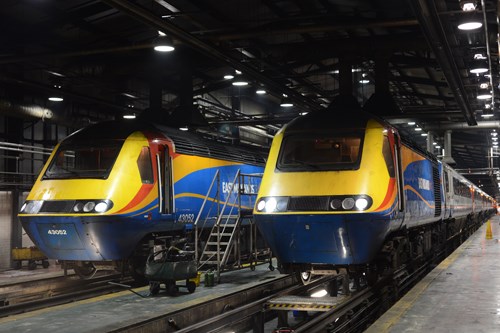
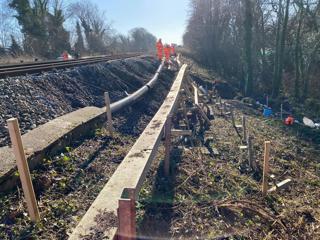
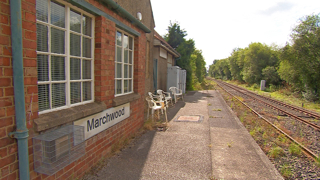
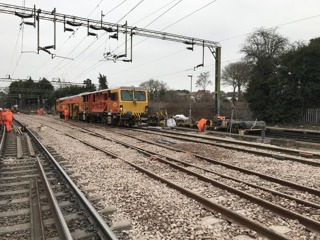
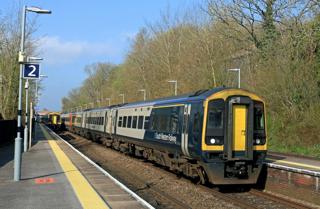
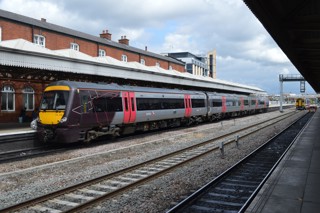











Login to comment
Comments
No comments have been made yet.